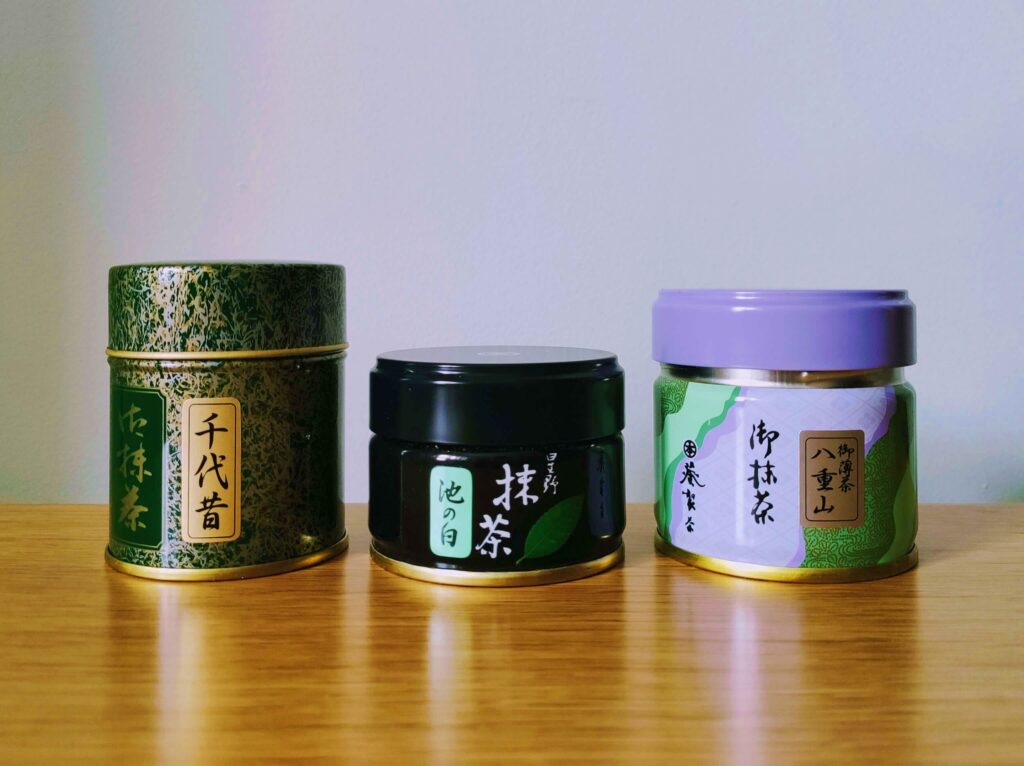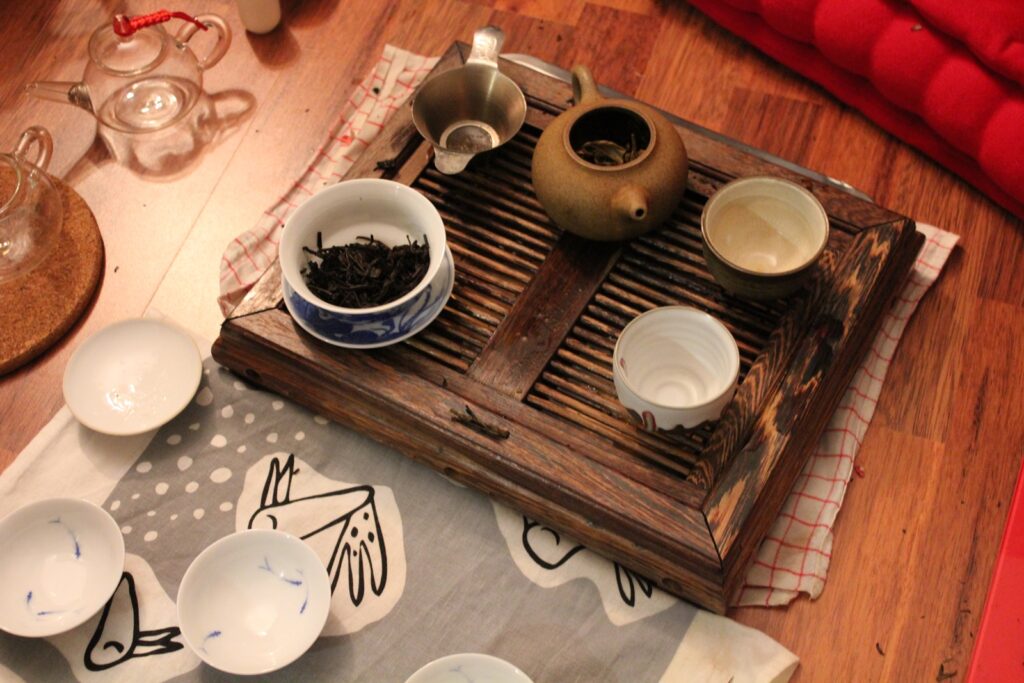In my Matcha 101 blog I wrote about the four main Matcha producing regions in Japan. Matcha has a very distinctive vegetal and savoury (umami) taste. And each region further adds its own unique flavour which is influenced by the growing environment – its climate, landscape and soil. In this post I compare Matcha from three of the regions – Uji, Fukuoka, and Nishio.
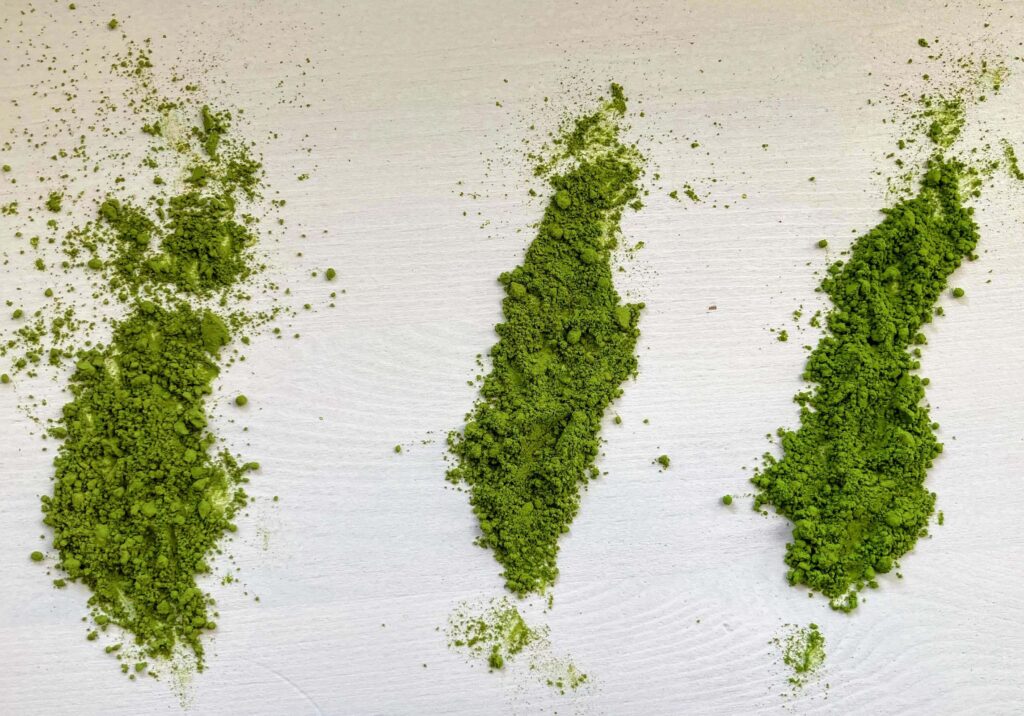
Uji: Chiyo Mukashi Matcha
Uji is near Kyoto, the birth place of the tea ceremony and Japan’s cultural centre. This particular Matcha is from Nishide Tea Factory which is managed by husband and wife team, Takashi and Atsuko Nishide and their family. Their family business was established 140 years ago!
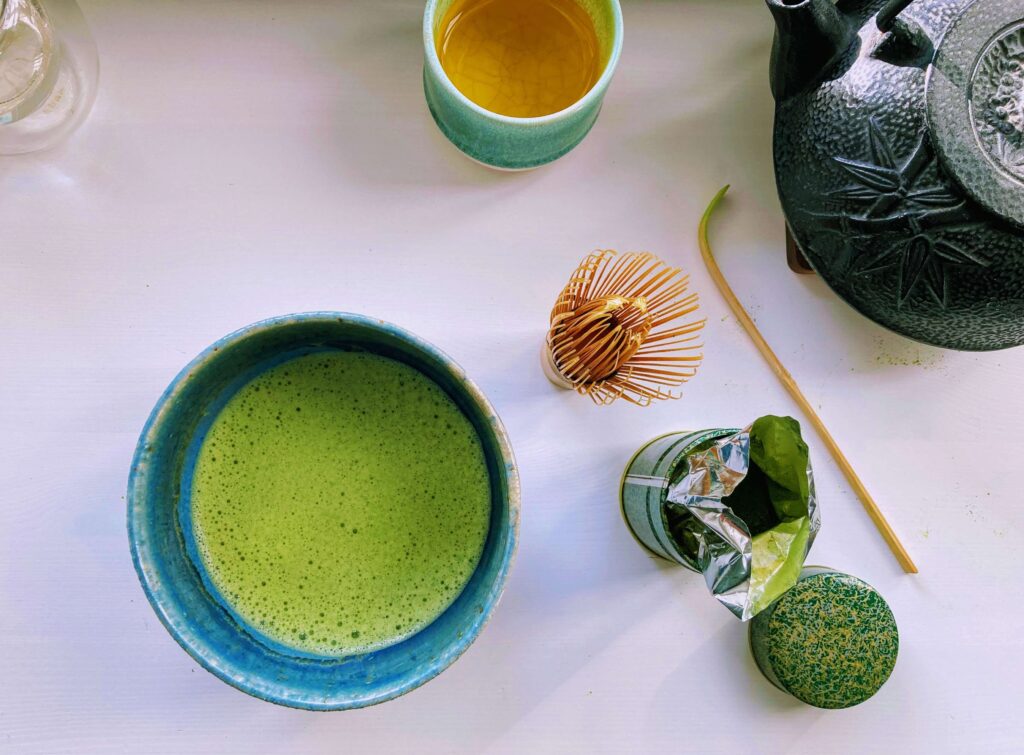
The Matcha powder is an intense vibrant green. It has a comforting warm wet vegetal aroma. It’s a classic Uji Matcha – thick, rich and bold. I immediately get seaweed notes in the taste and a strong umami flavour. Though the taste is bold, the texture and mouthfeel is silky soft and creamy, with a very slight bitter undertone that’s a little dry. It leaves a very pleasant, soft seaweed, very slightly sweet aftertaste. It actually made my head tingle in a nice way, I felt totally calm. Though that could’ve been because it was my third Matcha in a row! Anyway, it’s a beautifully well-balanced Matcha.
Fukuoka (Yame): Hoshino Yuuki Matcha, Organic
Fukuoka is located in Kyushu Prefecture on the southwest tip of Japan’s archipelago. The most renowned cultivation area in Fukuoka is Yame which is where this Matcha hails from.
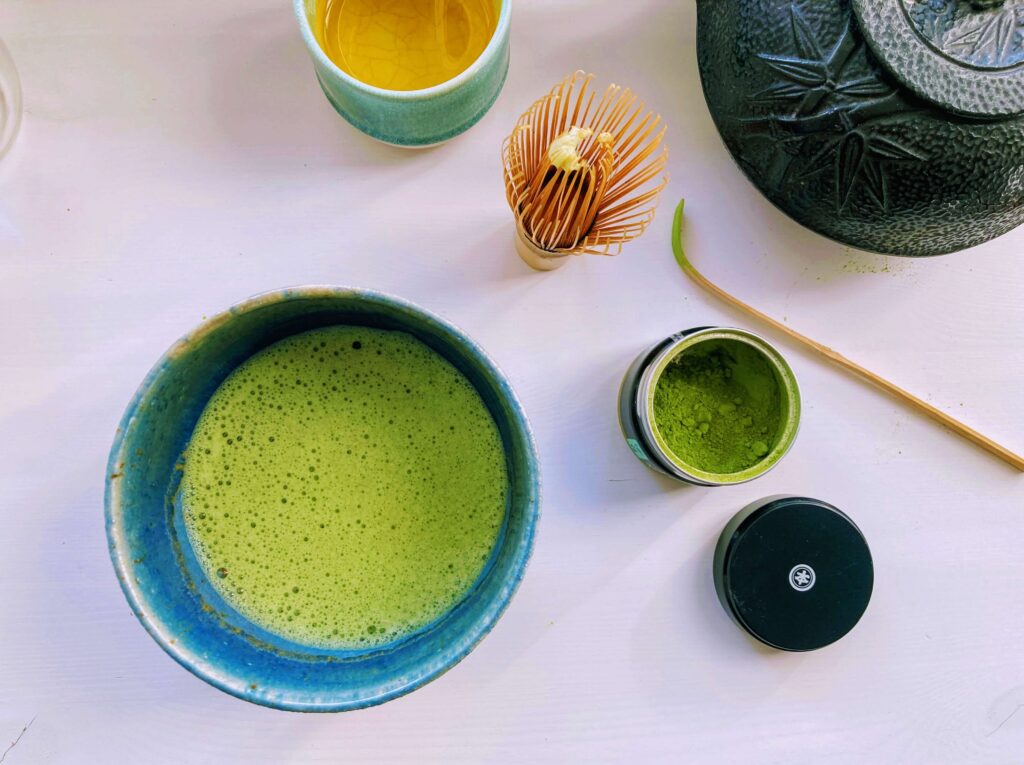
This Matcha has a warm toasty aroma that became more vegetal as it cooled. It’s fresh, grassy, vegetal with the characteristic nutty flavour coming through. As it cooled I also detected peas or edamame notes. It’s very mellow, soft and silky smooth with a refreshing aftertaste.
Nishio: Yaeyama Matcha
Nishio, in Aichi Prefecture, is the largest producer of Matcha, producing about 25% (290 tons) of Japan’s total Matcha output. It has an ideal terroir for growing tencha, with a mild climate, good humidity, fertile soil and is elevated at about 600m.
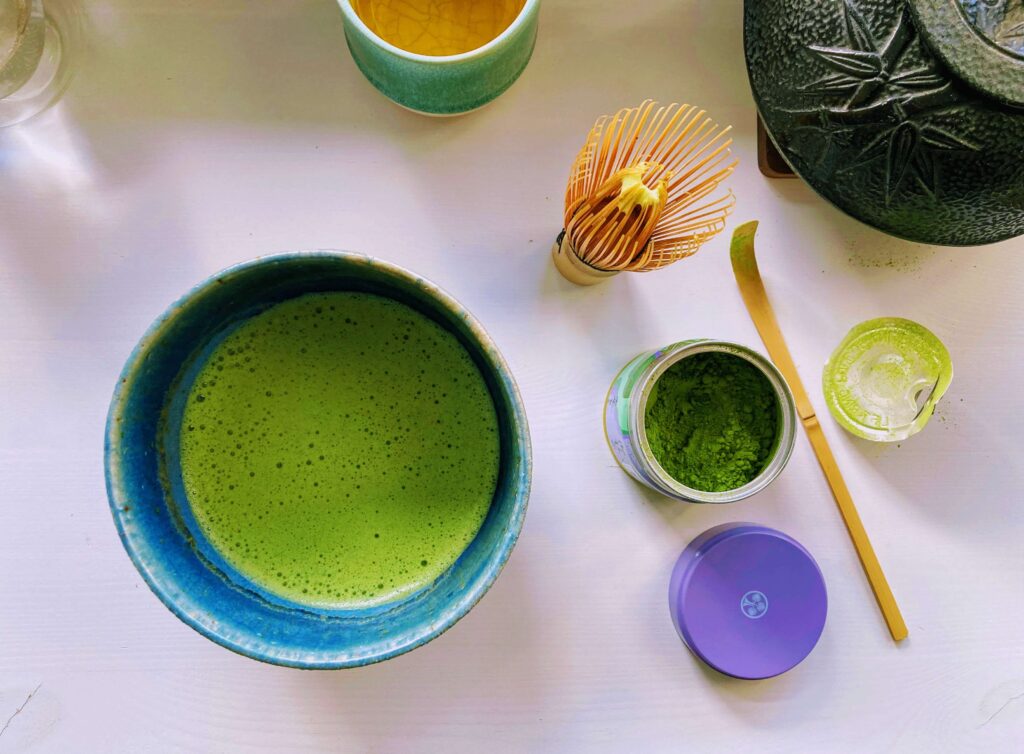
This Matcha is lovely and soft, and gives a nice creamy froth. It has the mildest flavour of the three, so maybe a good one if you’re just getting started with Matcha. It has a very fresh taste, and I detected a slight bitterness. The vegetal notes come through nicely and lingered in the aftertaste.
Conclusion
So there you have it, Matcha from three different regions tasted side by side. If you like a thick, bold Matcha then Uji is your go to. For something a little more fresh and grassy go for a Matcha from Yame, Fukuoka. And if you’re just getting started with Matcha, then give Nishio a try.
My personal favourite is Uji Matcha, so my taste has shifted from five years ago when I started my Matcha journey. Or perhaps it changes with your mood, and I needed an upfront ‘here I am’ kinda Matcha today!
Learn how to make Matcha: How to Make Matcha (with video)!
Learn more about Matcha in my Matcha 101 blog post!
All three Matchas in this blog post are from TeeMaa, Helsinki, Finland


